Click to jump to the reviews
Oxfordshire on Canvas|Linescapes|Chris Brotherton|Marcham in Domesday|Marcham's Notable Houses|Salt Production|Balls, Bedrooms and Banquets
FOR REVIEWS ON TALKS
after 2021 look in the monthly newsletters
NEWSLETTERS
Past Reviews for 2020-21
“The History of the Oxford Botanic Garden and Arboretum ” by Mark Davies
28th June 2021
For many years, Mark Davies lived on a narrow boat in central Oxford and he has recently moved into his own house in town. He is a local historian, author, public speaker, guide and publisher specialising in the history of Oxford.
Mark therefore has extensive local knowledge and this evening’s talk was about the History of the Botanic Garden in Oxford and those who have cared for it over the centuries. Founded by Henry Danvers, Earl of Derby, in 1621, the Botanic Garden is the oldest in Britain and Jacob Bobart, the ‘German Prince of Plants’, was the first keeper, famed both for his horticultural skill and his eccentricities. Thomas Baskerville described him as “the man that first gave life and beauty to this famous place”.
We were told about his family; his two sons, for example, another Jacob, ‘horticulture’s sapient King’, and Tilleman, who was overseer of the grounds of the new Blenheim Palace. Mark also alluded to a later descendant who was celebrated in fact and fiction as Oxford’s ‘Classical Coachman’ who had so many accidents with his four horse coach!
Mark’s talk also featured other important visitors and events associated with the Garden, including Ashmole, Ale, Apes, Aeronauts and even ‘Alice’! He spoke of James Sadler (1753–1828), “King of all Balloons”, the first Englishman ever to build and fly a hot-air balloon and this he did from the Botanic Gardens. So, as advertised, it was a talk about interesting people with passions rather than a horticultural catalogue of rare or peculiar plants!
Review by Simon Blackmore
"Beacons of the Past, LiDAR, and woodland archaeology in South Oxfordshire" by Ed Peveler
24th May 2021
On 24th May 2021, Ed Peveler spoke to us about using LiDAR for archaeological research and his experience in the Chilterns Area of Natural Beauty, LiDAR is a technique for identifying surface markings using a Laser fired from a plane with the reflections recorded and analysed to generate maps. In the Chilterns, LiDAR is of particular use because the area is 20% wooded (twice the English average) – making the usual techniques based on aerial photos or ground surveying or excavation difficult, if not impossible. LiDAR is usually done in winter to make sure that some of the laser actually gets to ground level.
Wooded areas can be much better preserved archaeologically because ploughing (and development) have not overwritten earlier events. Also, the woods can stop landscape erosion. LiDAR is particularly useful where there is ancient woodland (dating back before 1600). The Chilterns AONB has four times the national average of ancient woodland.
Ed was able to show us a large number of types of field features. The features were in periods which ranged from Neolithic times through open landscapes (Roman times) and medieval farmsteads to World War 1 (practice trenches) and World War 2 (Nissen hut bases). Even very modern features like an abandoned dry ski scope or a banger racing field can be seen. On the right is an example from a golf course of LiDAR compared to an aerial photo. Some features, like a ditch can be seen on both. World War 1 trenches can be seen in the LiDAR image but are covered by woodland (see the photos on the link below).
Once something had been identified on the ground, it became possible to check against photos and (in some cases) to visit and confirm by the normal archaeological surveying processes – validating the LiDAR approach. It is particularly helpful where local groups – who know the ground well - can provide local information and carry out research in locations they know already – thus blending the modern survey results with local knowledge. The plan is to use the data gathered to map, research and protect the underlying archaeology.
Some of the well-known remains, like Grim’s Ditch or Hillforts, can be easily seen on LiDAR. More excitingly, as LiDAR is more ‘sensitive’ than some other survey techniques, the results show features that cannot be easily spotted by other means – like old ditches which may mark boundaries. By analysing the scan results carefully, these features can be aged to give a ‘history’ of the area.
The survey of the Chilterns AONB was a one-off project funded by the National Lottery. The whole of England is now being surveyed using LiDAR – though with less detail than the survey of the Chilterns AONB. Marcham has already been processed and the results are in the National Library of Scotland web site: https://maps.nls.uk/. (Search for LiDAR). If you want to help analyse the Chilterns research, register at https://chilternsbeacons.org in order to go on to the portal, see the data, or do tutorials in reading LiDAR.
A fascinating evening that demonstrated clearly how this new technology can help us discover so much more about the past.
Review by Mike Hoath
Click to see all the images from Ed's talk
"PAGANS and PURITANS" by Tim Healey
26th April 2021
From the Roman goddess Flora to the May Queen over two millennia, with side helpings of religion, ‘moorish’ dancing and alcohol, Tim’s talk was both illuminating and generously illuminated.
The apparent simplicity of the celebration of the Rights of Spring was shown in fact to involve complexity and contradiction together with surprising connectivity over the centuries. Until the mid 18th century May time revels were always controversial even to the Chancellor of Oxford in 1250 prohibiting processions and dancing in Churches together with the display of garlands; oh the malign effect of flower power! The running duel between revellers and their adversaries reached its peak in 1644 when Parliament, following the Westminster Assembly of Divines (religious ministers, not politicians!) banned the maypole and subsequently all celebrations. The Restoration in 1660 soon saw an end to all that, with the maypole achieving the giddy status of a symbol of the monarchy. The dawning of the Romantic Era in the mid 18th century and acceptance of religious tolerance subsequently led to the greater encouragement of May celebrations with a more romantic tinge and the return of the May Queen.
Fascinating snippets of information and the busting of some myths emerged from the talk, at least to the reviewer. The first manmade maypole was recorded in 1350, but no pictures of ribbons attached to maypoles appear until 1836 and then they were initially used in a theatrical entertainment. The European vision of the festivities in the 18th century was one of licentious entertainment as pictured by Tiepolo, whereas the English vision in the 19th century was of a wholesome and idyllic nature evidenced in Holman Hunt’s paintings, praised by Tennyson in his poem The May Queen and promoted by John Ruskin, thereby helping to shape what we know as the May Day celebrations today.
Who was aware that Morris dancing was originally courtly, and even foreign? Derived originally from “Moorish” dancing in Spain, it spread through Europe taking on its own national identity. From its inception around the end of the 17th century to sometime in the mid 18th century when only Hymnus Eccliesasticus was sung, the Magdalen Tower musical session lasted 2 hours or more; a bit chilly for the singers at that time on a May morning! While alcohol, without saying, played its part in the reveries, with parish churches centuries ago providing ale for sale, even the brewers of Oxford tried to get in on the Magdalen Bridge event in the late 19th and early 20th century by dressing their horses and drays and processing during the celebrations.
Fortunately for Oxford and the county’s towns and villages the May Day celebrations thrived, although Morris dancing was on the wane towards the end of the 19th century. Good fortune in the shape of William Kimber of Headington, a squeeze box player in a Morris side, enlightened the foremost English folk song/dance historian Cecil Sharpe to the Morris musical heritage, thereby ensuring its revival.
If you want to jump off Magdalen Bridge on May Day, don’t even think about it! The authorities have now taken steps to prevent it and historically it was a short lived affair from the 1940s to the 1990s, with only a few souls (drunk/lunatic?) trying since. Fortunately the authorities have assisted in the popular continued Magdalen Bridge celebrations.
Enjoy the festivities when they are permitted to return, enjoy the centuries of local history.
Review by David Henderson
Click to see all the images from Tim Healey's talk
"OXFORDSHIRE ON CANVAS" by Marie-Louise Kerr
22nd March 2021
With Covid restrictions in place for the past year we have all been drawn to the beauty and delight of the countryside around us.
On Monday 22nd March, 62 members of the Marcham Society had the opportunity to take a pleasurable visual tour of Oxford and the wider South Oxfordshire countryside portrayed by an illustrated collection of paintings, glass work and sculpture by artists from the 18th century to the Present, compiled by Marie Louise Kerr, a ‘Curator without Museum’ as she calls herself.
Through her passionate interest in art history Marie-Louise provided, in a most engaging manner, a well explained narrative for each of the illustrated the two-dimensional canvases presented, depicting scenes from Oxford, Abingdon, Wallingford, Benson, Shillingford, Uffington and Wittenham Clumps to name but a few. She had interesting stories about each artist.
Many artists had either lived or spent many years in this area. Amongst their works, the examples she gave were ‘The High Street Oxford,’ by JMW Turner (1755-1851) - acknowledged as one of the great landscape artists of all time - and two paintings by George Dunlop Leslie (1935-1921): ‘September Sunshine’ showing the seasonal nature of the River Thames and ‘Sun and Moon Flowers’ using the view from the window of his home in Wallingford looking over to the meadow the opposite bank of the River Thames.
She included Paul Nash (1889-1946) a greatly celebrated British surrealist painter and war artist who throughout his life held a special affinity for the well-known landmark, Wittenham Clumps which he had visited first as a young man. He was inspired by such landscapes with elements of ancient history and he painted ‘The Wood on the Hill’ in 1912 and, by contrast, his bold watercolour ‘Wittenham’ in 1935.
There were others such as Kate Tyron (1885-1952), an American who had followed her passion for the nature writings of Richard Jefferies; she was inspired by the beautiful countryside around Swindon and painted ‘The Village of Uffington’ in 1910.
Most of the landscape and paintings viewed are still easily recognisable and predominately unchanged since they were originally captured on canvas, despite the onset of modernisation - but not all. One of the most haunting paintings of the late 20th century Roger Wagner’s (b 1957) 'Menorah’ 1993, currently hanging in St Giles Church in Oxford; it depicts with juxtapose imagery the holocaust and the crucifixion set in front of the cooling towers of Didcot power station which has dominated the Oxfordshire landscape since 1970 until it was finally demolished in 2020.
Moving from canvas Marie-Louise touched on other forms of art within the area which we were encouraged to visit. Stained glass windows designed by John Piper (1903-1992) - the artist responsible for the design of the Baptistery window in Coventry cathedral. These could be seen in several churches, (namely St Mary the Virgin, Iffley, St Peter’s, Wolvercote and St Bartholomew’s, Nettlebed).
Marie-Louise concluded her virtual talk on a lighter note, asking who among us had ever looked up as they walked along Broad Street, Oxford and had spotted the statue by Anthony Gormley. He is well known for his Winged Angel of the North, and on the top of the Blackwell’s Art and Poster Shop on Exeter College, stands his 7ft statue of a nude man, one of a series of sculptures called ‘Another Time 11’. Passing by one would be excused from thinking ‘What is that man doing up there?’ and Marie-Louise quoted Gormley’s own words, saying that he hoped there would never be a single satisfactory answer!
A captivating evening and Marie-Louise reminded us of the saying: ‘Beauty is always in the Eye of the Beholder’ - no doubt the audience took away memories of their own favourite scenes and of the artists that she had so sympathetically presented.
Review by Ann Southwell
"LINESCAPES"
22nd February 2021

"LINESCAPES" by Hugh Warwick
On Monday 22nd February 2021 Marcham Society members enjoyed a lecture titled ‘Linescapes’ given by ecologist and writer Hugh Warwick, author of ‘A Prickly Affair’ and ‘Hedgehog’ which reflect his in depth study of these animals. In May 2017, his book titled ‘Linescapes: Remapping and Reconnecting Britain's fragmented Wildlife' was published.
Hugh explained how the landscape has been transformed by the lines or barriers created by human activity, in terms of hedges, walls, ditches and dykes that enclose the land. Green lanes, roads, canals and even power lines connect but they also fragment the environment and have had a significant impact on wildlife.
Linear features and field systems that can be seen on Dartmoor indicate that such fragmentation dates from the earliest times. However, a well managed landscape can provide good habitats for wildlife. Green lanes and the traditional Devon hedgerows made partly of stone wall over planted with beech can benefit wildlife as they create a micro-climate, encouraging lush vegetation. Unfortunately, as Hugh pointed out, some 60% of UK hedgerows are in poor condition providing no benefits to either landowners or wildlife.

The Industrial Revolution saw the creation of canals which changed the landscape completely. Recently there has been regeneration of waterways which now provide an improved habitat for otters, leaf cutter bees and other endangered species. Railways and roads provide us with faster transport and unfortunately, as Hugh pointed out, the number of animals killed is very high but he suggested that they too can create a beneficial habitat and a useful corridor for particular species. There is much unused ‘wasteland’ that border these highways and with careful planning they can be surrounded with coppiced woodland. Even the salty edges of Motorways encourage such plants as Danish Scurvy grass.
Steps can be taken to alleviate the fragmentation of the countryside. The successful use of tunnels and eco-ducts can reconnect wildlife and have been shown to be effective (below left). Hugh gave us several examples of success stories, not least at the Devil’s Punchbowl with the transformation of the A3 by the Hindhead Tunnel (below right). Land around all barriers can be managed with wildlife in mind but of course both the will and extra funding are needed.

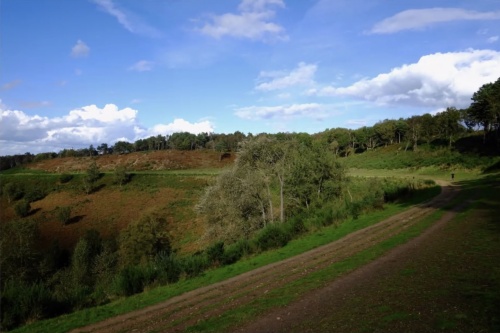
A lively question and answer session followed - a big thank you goes to Hugh Warwick for his lively, interesting and passionate talk.
Review by Fredericka Smith
"ANNUAL LECTURE"
25th January 2021
Chris Brotherton: "I never thought it would end up like this!"
Chris is well known in Marcham for building the new Marcham Centre. His lecture revealed his background and challenging projects he has led as Land Director of Thomas Homes.
He claims a heritage from two Brotherton ancestor industrialists with strong philanthropic ethics and another (Hugh Shaw) decorated VC for bravery in 1865. The former is an essential part of what Thomas Homes does in communities and the latter to tackle challenging developments.
With a business degree and a year off travelling the world, Chris started in surveying and estate management, and then had an opportunity to start work with Hugh Thomas in 1999 and together they created 'Thomas Homes' in 2003. Thomas Homes specialises in the challenging development of sites with old buildings and heritage projects.

He described three of their many projects:
1) the Catacombs Centre, Littlegate Street in Oxford, a small site transformed by an innovative building in a very tight space;
2) the Old Railway Quarter in Churchward, Swindon, where new build was combined with award-winning re-use of Chain Testing House, with smart modern apartments inside the old industrial buildings, restoration of original Brunel windows and combining solar panels with roof lights to keep the look of the original roof line;
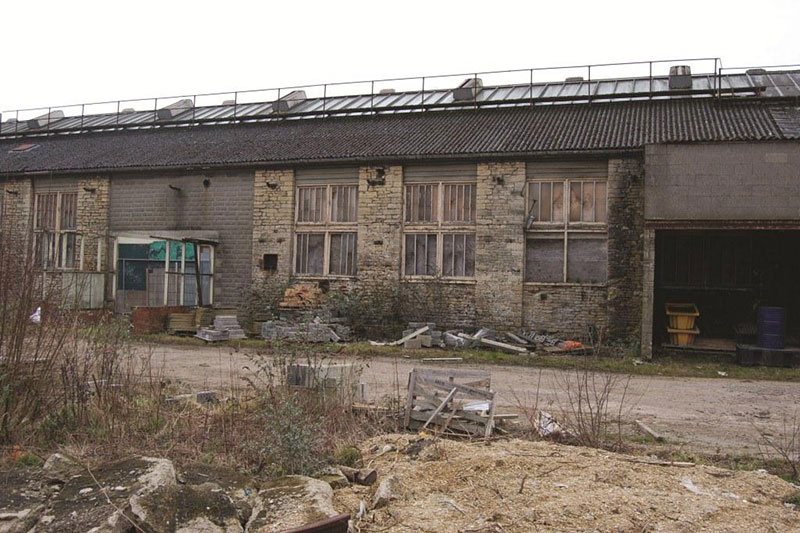

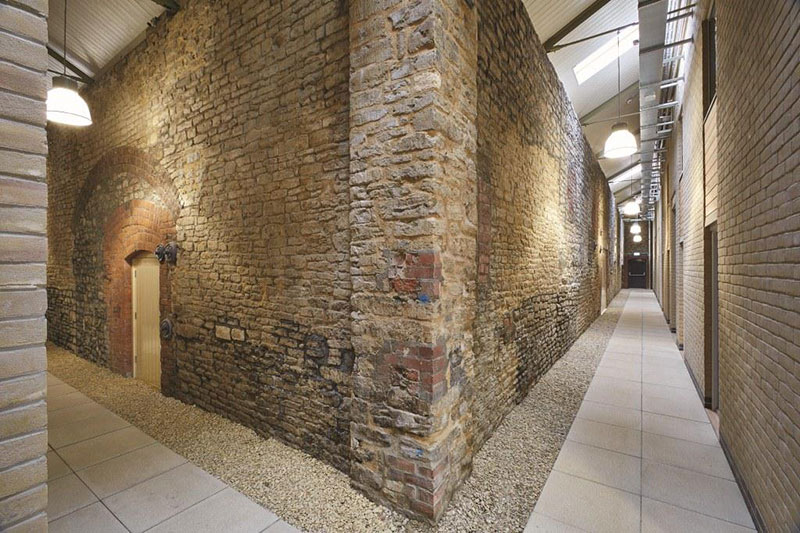

3) the Fair Mile Hospital buildings and surrounding site in Cholsey, keeping external and key internal architectural features of the building, whilst accommodating high eco-specification apartments inside the structure. The project generated community facilities in Cholsey, including the Great Hall, a cricket pavilion and pitch, restored gardens and a well-used coffee shop.
Chris summed up by saying that when he set out in life, “I never thought it would end up like this!”
Chris thanked the community in Marcham for their support and making it easier than projects in some other villages he could name! His talk kept a Zoom audience of over 50 enthralled.
Thank you, Chris, for entertaining and informing us!
Review by Jim Asher
"Members' Evening Talks"
23rd November 2020
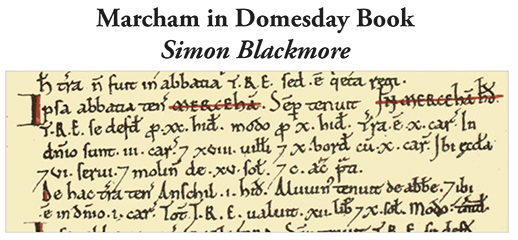 The Marcham Society always holds a members evening series of talks in November of each year. This November, Simon Blackmore (our Membership Secretary) provided a talk over Zoom, which has become the normal practice in these times.
The Marcham Society always holds a members evening series of talks in November of each year. This November, Simon Blackmore (our Membership Secretary) provided a talk over Zoom, which has become the normal practice in these times.
His talk was on the theme of Marcham in Domesday Book (please note: no definite article in line with recent scholarly tradition).
The talk was well structured, starting with the historical context and why William I commissioned the project as a way of taking stock of his conquests 20 years after the initial victory at the Battle of Hastings. Simon then moved on to look at the county of Berkshire, of which Marcham was a part, and then where Marcham was placed in the importance of villages within the county. There were examples of Old and Middle English in the manuscripts as well as Medieval Latin, which are indecipherable to the modern eye.
There was also an exposition of the feudal hierarchy as the Normans imposed it, similar to the Anglo-Saxon hierarchy that had gone before. Marcham was part of the holdings of Abingdon Abbey and the parish boundaries as described in 965AD remain virtually unchanged today so there is confidence that what was meant as Marcham in Domesday Book correlates well with current Marcham. Domesday Book language was written in a type of Latin, the administrative language of the day, but there was very considerable use of abbreviation, so the manuscript version is very difficult to read.
The last part of the talk concerned some of the people of Marcham using information gleaned from different contemporary sources close in time to the Domesday Book. The impression that was left was that for nearly 1,000 years Marcham had been a settled farming community, and only in the last 100 years or so has it changed and now grown from around 190 people in 1086 to the c. 2,000 inhabitants today.
Review by Peter Steere
"Members' Evening Talks"
23rd November 2020
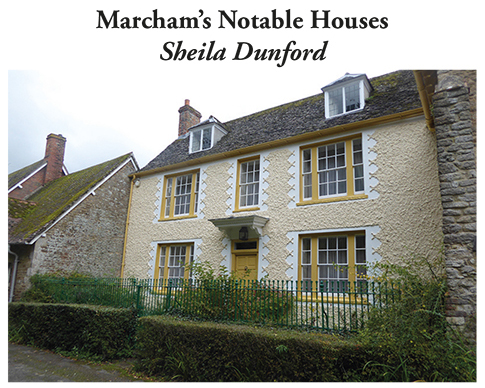
Once upon a time before Berkshire was turned into part of Oxfordshire, Marcham village took a deep breath and found a new postcode. Not much has changed. Thanks to the dedicated research done by Sheila Dunford, we found that the foundations of the settlement remain. Sheila also acknowledged the work previously done by Elizabeth Whitehouse and Claire Bolton.
Here are four of our most venerable buildings in the village that Sheila both illustrated and described in her interesting talk.
3 Church Street is made of limestone rubble with rough cast front, and all openings have decorative plaster surrounds. It was thought to have been owned by a Mr Watts and was listed as the Manor House, Marcham. Various farm buildings were on either side. Mr Watts died in 1769. In 1818 George Elwes bought it and plastered the front to disguise changes to the windows. The house was let till 1901 when Charles Duffield moved in. Dr Duffield repaired the plasterwork and separated the place into two dwellings. In 1982 John Duffield has the plaster professionally redone and in 2000 it was returned to one dwelling.
Tithe House is by the church gate. This grade 2 L-shaped building dating to 1580 was extended in 1646. The actual tithe barn where tithes were stored was demolished in the early 20th century. Mr Duffield’s father and stepmother lived in the tithe house. John Duffield had work done on the Dovecote and after his father’s death the house was restored in its original appearance.
Hyde Farm, approached by a barn gateway and courtyard, dates to 1290 and was originally like a big barn with no ceiling. The original beams were black with wood smoke. The first ceilings were probably put in during the late Middle Ages. The chimney came in 1600. An extension was put on in 1625. Above the fireplace there are incised plaster signs, partly to ward off witches.
The name “Hyde” it is said refers to a Mr Hyde who signed Charles death warrant but this is isn’t true, it’s most likely because it was a hide of land. The house was remodelled and extended in the 16th and 17th century. It is now a Grade 2* listed building. Mr Busby who farmed nearby in modern times said that their well had water with healing properties – patients came from the Oxford Eye hospital to benefit from its waters.
The Priory was originally a small rectangular building in the grounds of a farm. It was a retreat for the (Abingdon) Abbott and originally a source of the monks’ food supplies from the Dovecote’s for example.
We heard about these four big houses – the village has plenty of smaller dwellings too along the lanes. Just knock on the door or politely peep through the window and see the twisted stairs or the second glass or the latched door handles - Yeoman's Cottage, for example, has them all.
This was the first talk by Sheila on Notable Houses of Marcham and she promises others in the future. She has entered the details of these houses into the Marcham Society's Archives now held in the new Community Hall.
"Salt Production, Distribution and Use in Prehistoric and Roman Britain" by Dr Janice Kinory, University of Oxford
26th October 2020
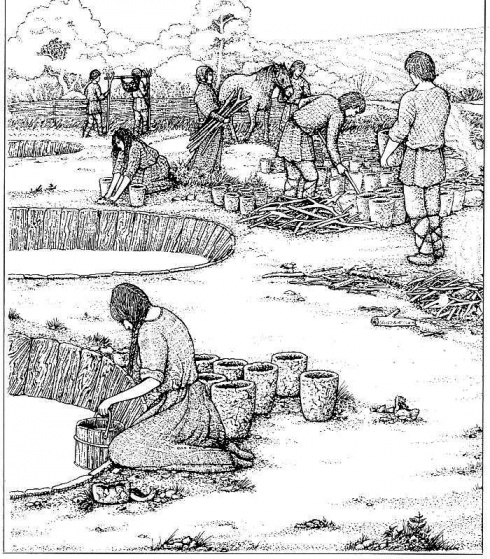 Reconstruction of Iron Age Salt Making
Reconstruction of Iron Age Salt Making
Today, the availability of salt is not usually something we think too much about as the supermarket (or preferably the village shop) will help us out if our stocks run low: in contrast, our Neolithic ancestors had to hunt and source meat for their health needs of 1 to 2 gm of salt per day. We learned this surprising fact during a most informative talk in October which was given to the Marcham Society by Dr Janice Kinory and to whom we are most grateful. Not all questions could be answered though due to the passage of time and a lack of evidence: e.g. was salt used for ritual purposes, dowries possibly?
We heard that salt was used in butter making during the Iron Age and milk production too. In Roman times it would have been used to cure meat (a great invention) and in animal farming practices.
Before the introduction of money, a Roman soldier would have been paid partly in salt, a very valuable commodity which was produced on an industrial scale with the use of slaves and prisoners. Interestingly, the word 'salary' is derived from the word salt.
In the British Isles salt production could not be carried out all year. We heard that it tended to flourish along the shoreline and tidal creeks, e.g. in Teeside, Cheshire and Lincolnshire. Droitwich was an important area too. Tribal groups tended to cluster around areas of high salt production. Further afield, salt mining in Germany was even in existence as long ago as the Bronze Age.
With regard to the drying methods in salt production, one important way was through the use of clay pots, known as briquetage. These were produced in shades of grey or orange but few complete examples remain today. Interestingly, small finds of briquetage have been discovered in Abingdon. Drying ovens existed but, perhaps unsurprisingly, no complete ones have been found.
Was salt produced in Marcham? Its sea celery bed and salt spring lie not far from the site of the Roman temple (situated to the west of Marcham) which Janice Kinory helped to excavate. If so, perhaps the salt was given as a ritual offering at the temple? Geo-physical and further archaeological investigations might be able to shed further light on this theory.
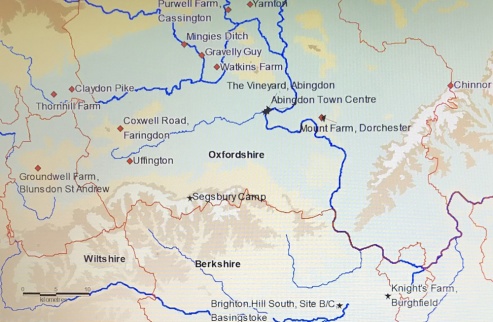
Map of Oxfordshire Briquetage finds
Finally, sea salt is 2.6% sodium chloride and contains five other types of salt which makes it taste bitter. By the way, an interesting thought for the shopping basket: pink salt is made up of tiny crustaceans that were caught in the drying process!
Review by Rosemary Harwood
(Further information about the Marcham salt springs
can be found referenced under the 'Archaeology' tab)
"Balls, Bedrooms and Banquets" by John Vigar
28th September 2020
We are now all becoming used to using Zoom and on Monday 28th September, 43 Marcham Society members and guests logged in online to hear John Vigar's fascinating talk. He was speaking to us from Norfolk and while most were listening in the comfort of their homes in Marcham, others were further afield in Ely and even in Canada!
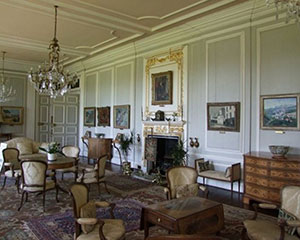
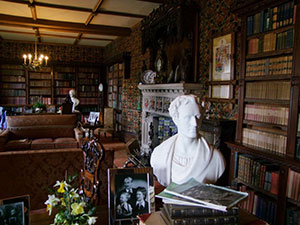
Oxburgh Hall, King's Lynn (National Trust)
John talked about the development of the English Country House and he took us through from Medieval times to the mid twentieth century, following the evolution of furnishings and architectural fashions. He linked the changing styles to the social and political context of the historical periods, Elizabethan and Stuarts, Georgians and Victorians, Edwardians and ending with the Windsors. He took examples from houses that are well known to the audience and open to visitors, including Kingston Bagpuize House and Milton Manor, local to Marcham; others were further away - some still private homes and not open to the general public. His illustrations were well chosen and well explained; many were contemporary prints or pictures, drawn or painted at the time rather than modern photographs and they gave a personal insight into decoration and taste of the time. His theme throughout was the recurrent cycle of fashion and social behaviour through the ages showing how etiquette in the grand country houses swung from strict protocol to friendly informality and back again.
John's delivery was clear and careful with a subtle touch of humour, so that after an hour he left many of his audience captivated and curious, keen to know more.
Review by Simon Blackmore
Click to jump to the reviews
Oxfordshire on Canvas|Linescapes|Chris Brotherton|Marcham in Domesday|Marcham's Notable Houses|Salt Production|Balls, Bedrooms and Banquets

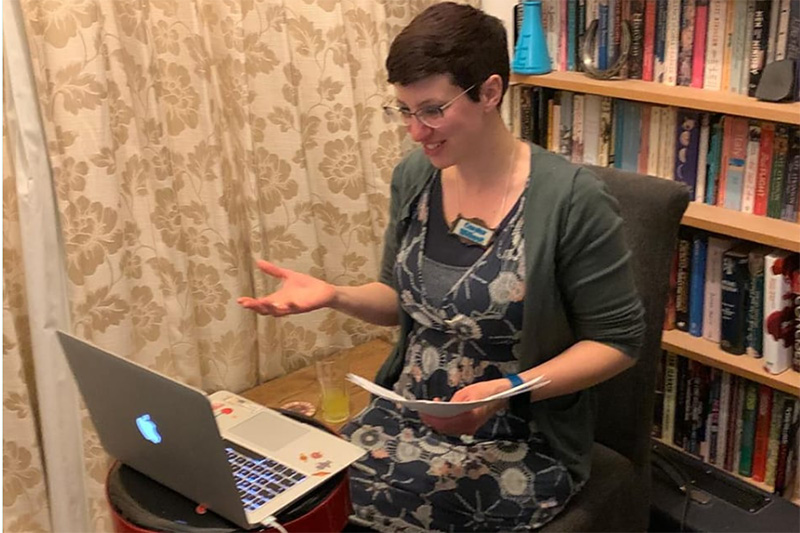
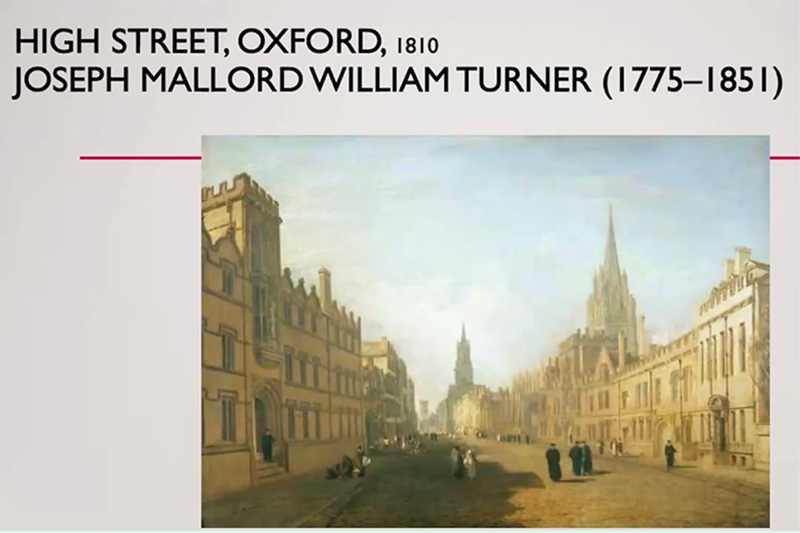

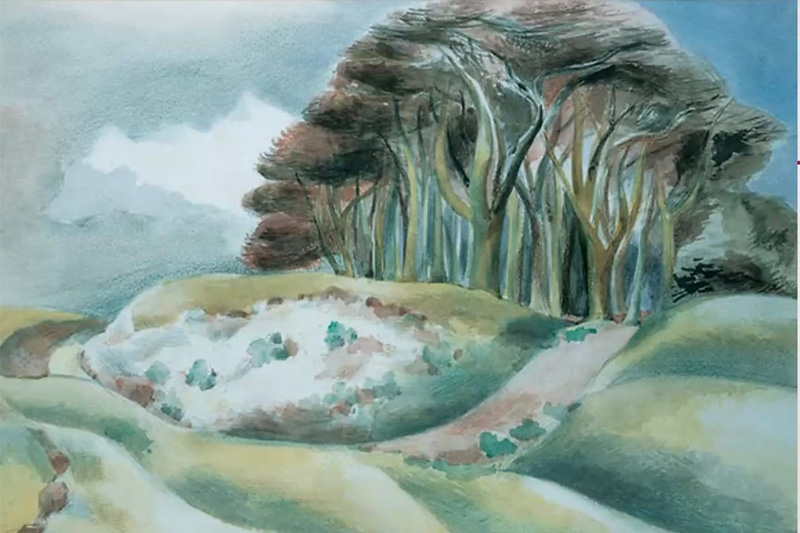

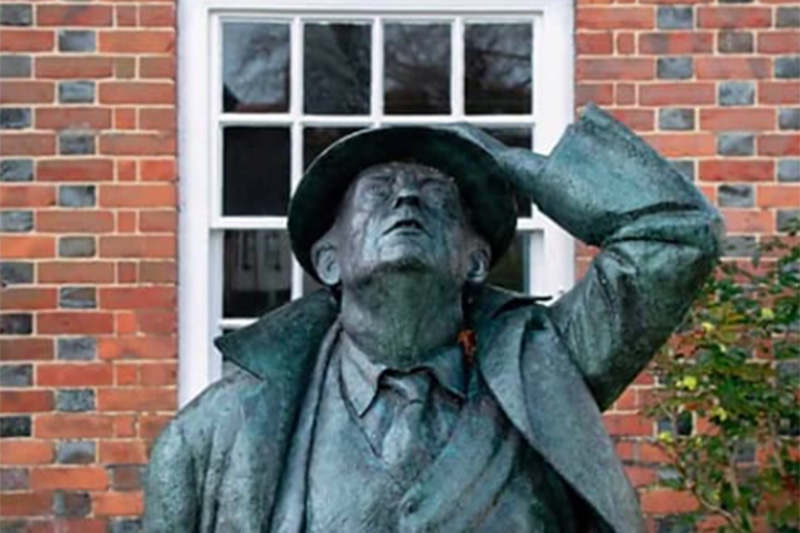
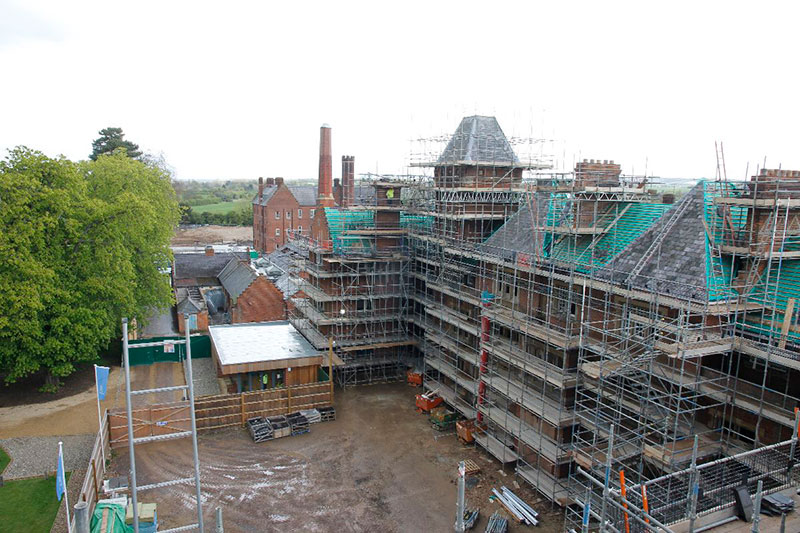
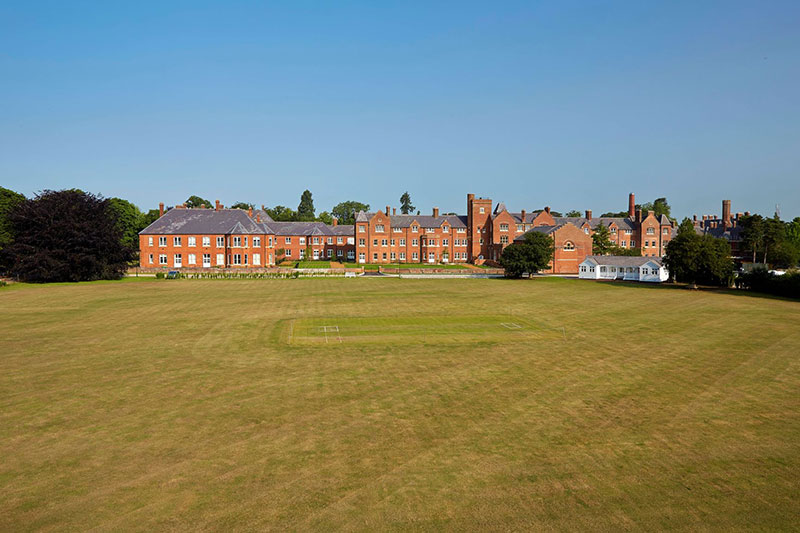
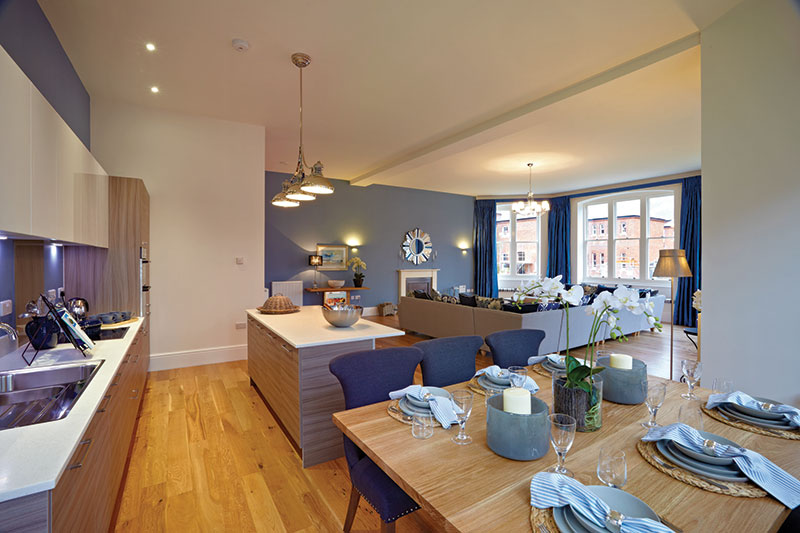
 Follow us on Facebook
Follow us on Facebook